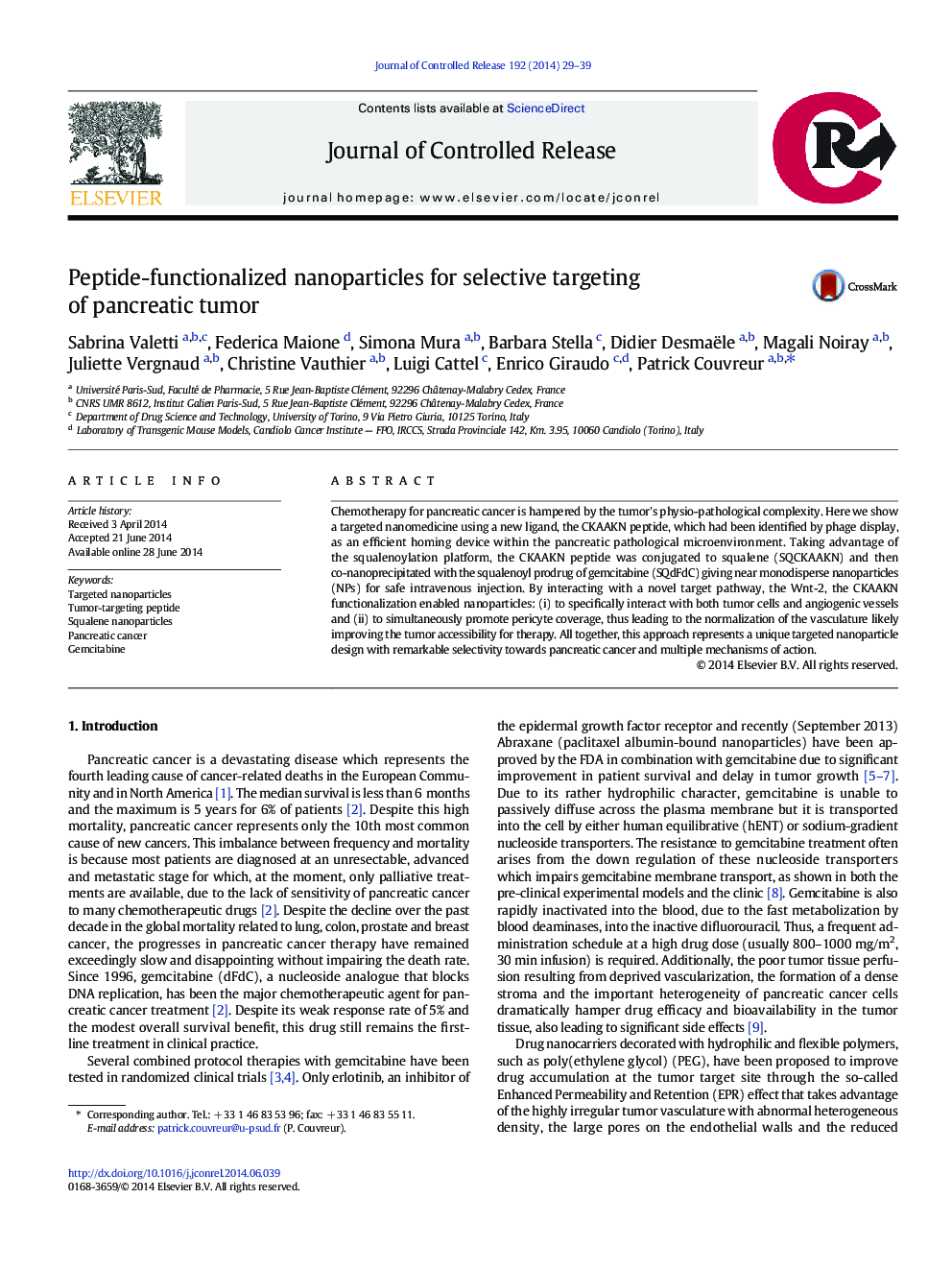| Article ID | Journal | Published Year | Pages | File Type |
|---|---|---|---|---|
| 1423933 | Journal of Controlled Release | 2014 | 11 Pages |
Chemotherapy for pancreatic cancer is hampered by the tumor's physio-pathological complexity. Here we show a targeted nanomedicine using a new ligand, the CKAAKN peptide, which had been identified by phage display, as an efficient homing device within the pancreatic pathological microenvironment. Taking advantage of the squalenoylation platform, the CKAAKN peptide was conjugated to squalene (SQCKAAKN) and then co-nanoprecipitated with the squalenoyl prodrug of gemcitabine (SQdFdC) giving near monodisperse nanoparticles (NPs) for safe intravenous injection. By interacting with a novel target pathway, the Wnt-2, the CKAAKN functionalization enabled nanoparticles: (i) to specifically interact with both tumor cells and angiogenic vessels and (ii) to simultaneously promote pericyte coverage, thus leading to the normalization of the vasculature likely improving the tumor accessibility for therapy. All together, this approach represents a unique targeted nanoparticle design with remarkable selectivity towards pancreatic cancer and multiple mechanisms of action.
Graphical abstractFigure optionsDownload full-size imageDownload high-quality image (88 K)Download as PowerPoint slide
